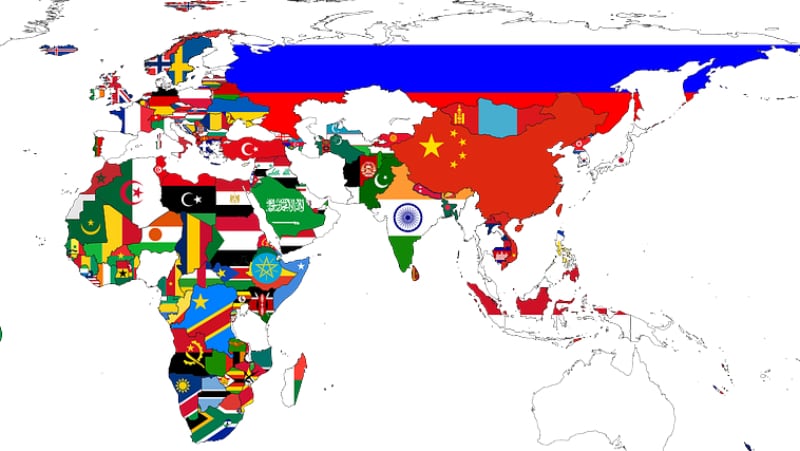The organic food market in India
Organic foods in India is a relatively new but rapidly growing industry.
According to the The Indian Organic Market: A New Paradigm in Agriculture report, the Indian organic market is valued at some US$563mn (INR40bn) currently, but is expected to reach up to US$1.7bn (INR120bn) within the next two years.
India exports over 300 products in 20 categories to over 20 countries. Its primary destinations are Japan, Europe, Canada, West Asia and the United States.
“The organic industry in India is growing at a fast pace. The government is very supportive of organic,” said Rohan Grover, Director of Nature Bio Foods Ltd. Nature Bio Foods is a subsidy of LT Foods, which produces the Daawat brand of rice, one of the most popular in the country.
The industry is backed by substantial government support in the form of multiple regulatory frameworks and organic farming schemes. 11 state governments have formulated their own State Organic Farming Policies.
The state of Sikkim has gone a step further, converting over 75,000 hectares of land into certified organic farms and becoming India’s first Organic State. Meghalaya is also working towards this goal, aiming for 2020.
“The [government] efforts are still evolving, and now includes regulations such as labelling and packaging, where the Food Standards and Safety Authority India (FSSAI) has helped to structure the market. Now products must have full certification before they can claim themselves to be organic,” said Grover.
FSSAI has also attempted to boost consumer trust in Indian organic products by rolling out certification systems such as the National Programme for Organic Production (NPOP) and Participatory Guarantee System-India (PGS-India).
The organic market’s growth has also been attributed to a rise in per capita purchasing power and an increase in awareness of the socio-economic, sustainability and health benefits of organic foods.
“[I believe the Indian organic industry is] on the right track, taking the right steps, with the right players and the right regulations in place,” added Grover.
Agriculture is also at the heart of India’s organic industry, and in line with this many organic companies work hand-in-hand with farmers.
At present India has 2.7 organic farmers, the largest number in the world.
“Organic India provides farmers with training and education, enables self-sufficiency, and helps develop skills that can be passed on to future generations,” said Bharat Mitra, Founder, Organic India.
“We work with thousands of farmers in India to cultivate tens of thousands of acres of regenerative organic farmland.”
Organic India is the current market leader in the Indian organic market, holding some 9% of market share.
The overall positive environment has led to optimism in organic manufacturers - Organic India is looking at a revenue of some US$70.4mn (INR5bn) by 2020, whereas Nature Bio Foods is confident that ‘both our domestic and foreign businesses should grow [significantly]’.
“India has 1.2 billion people. [We are] all set to become the biggest organic market in the world in another 10 years,” said Grover.
Halal market in Japan
Japanese food firms are increasingly interested in the prospect of halal food products, partly due to interests driven by Tokyo Olympics 2020.
For example, Japanese firm NH Foods has teamed up with Malaysian firm Lay Hong Bhd to open a new factory manufacturing halal frozen meat.
Located in Pulau Indah, Malaysia, the factory would “cater not only to local market, but for export markets such as the Middle East countries, Singapore, and Japan”, said Hiroji Okoso, NH Foods’ director and senior managing executive officer.
The upcoming Tokyo 2020 Olympics and demand for processed foods in Japan are reasons for opening a new plant, he said.
“Domestically, the demand for premium quality and convenience food is growing and due to the upcoming Tokyo 2020 Olympics, we expect a strong interest in halal food from mainstream retailers and food services. This plant is just in time for the underserved market,” he said.
Last August, the Malaysian government also signed a memorandum of cooperation with the Japanese External Trade Organisation (JETRO).
As of 2016, Malaysia’s halal product exports to Japan were valued at RM$2.67bn, which is 20.8% higher than 2015.
However, some are reserved about the prospects of the halal market in Japan.
One reason, is because of a lack of a centralised authority to monitor certification guidelines in Japan, Ammar Jebawi, founder of Nishi Nippon Halal Association (NNHA) – a halal certification body told us.
“The Japanese manufacturers told us that there are different information on how to deliver halal food and they are confused about the information that they are getting.”
He further claimed that there are certification bodies that did not provide the training needed to prepare halal food, and would grant halal certification once receiving a certification fee.
Bread consumption in South East Asia
With urbanisation, higher buying power, and international travelling, consumers in Southeast Asian (SEA) countries are adopting more western diets, such as a greater consumption of bread and pizza.
This is according to Lesaffre, French baking yeast manufacturer.
“We see that bread consumption will grow annually by 5% - 6% across the SEA markets,” said Joergen Lundgaard, the managing director of Lesaffre in APAC.
“What we classify as bread, bakery, and the yeast markets will be in some of the highly populated countries in SEA, including Philippines, Thailand, Myanmar, Vietnam, and of course Indonesia.”’
He declined to reveal the sales performance for these markets, but said that the firm was “growing above market growth, which means that it is gaining market share.”
He added that the firm was working with “all major industrial bakery companies, which are top five or top 10 in each country,” and that it enjoyed 25% to 40% of the market share in the baking yeast sector in most of the SEA countries.
“I mean bread consumption and thereby yeast consumption is relatively low in (APAC)…In our region, the highest is 33kg per capita in Australia. It goes down to its 12kg per capita in Philippines and the consumption in Thailand and Myanmar is even lower.
“But we are convinced that bread consumption will grow in these markets. I mean you can have a small country in Europe that has a high bread consumption per capita, then you have Indonesia, which is roughly 3kg per capita.
“[But] you have a population of 250m over there, so it is still very early days I will say, but with the trends around urbanisation, middle class income increasing, higher buying power, more travel and being exposed to bakery products, these will have an impact on bread consumption.”




